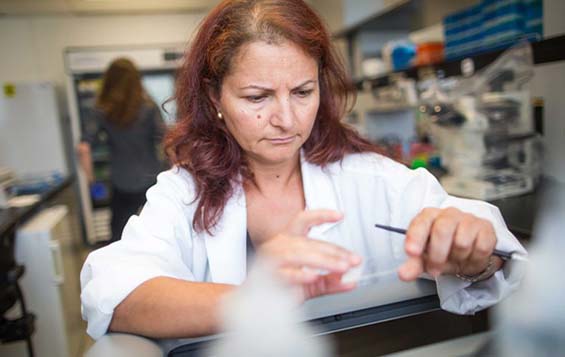Phyllis Billia is part of a Medicine by Design team working on a screening tool that can predict the risk of cardiac disease and other inflammatory diseases of aging using only a blood test.
Billia is a heart failure specialist, and the director of research at the Peter Munk Cardiac Centre, University Health Network (UHN).
Aging blood stem cells can acquire mutations that multiply and begin to make up a large proportion of all blood cells — a process called “age-related clonal hematopoiesis” or ARCH — which can lead to inflammation and degenerative diseases of aging like cardiac disease.

Phyllis Billia, director of research at the Peter Munk Cardiac Centre, University Health Network.
The team, made up of eight labs from UHN, U of T and the Ontario Institute for Cancer Research, and led by the John Dick lab at Princess Margaret Cancer Centre at UHN, is studying cells at the individual level to determine why these mutations happen and to find biomarkers for cardiac disease by analyzing thousands of patient blood samples.
To begin translating part of this project, Billia’s team recently received a Pivotal Experiment Fund to develop a simple, non-invasive and inexpensive blood test to monitor patients following receipt of a transplanted organ, helping to identify patients who required heightened surveillance or intervention during their transplant journey.
Early data in patients receiving a heart transplant show there is an association between ARCH and post-transplant complications including death. Dr. Billia says, when the post-transplant diagnostic tool can be brought to the clinic, it has the potential to save millions of healthcare dollars and to save lives.
“We think that, by developing a diagnostics platform that can identify clonal hematopoiesis in people who have had a transplant, we can predict when individuals may need more monitoring, and possibly medical intervention, post-transplant,” says Billia.
Back to “Five ways Medicine by Design is transforming treatment for cardiac disease.”






